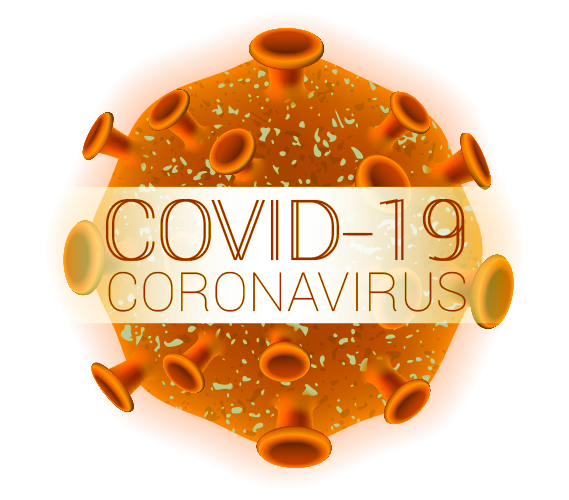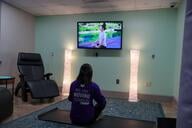You have /5 articles left.
Sign up for a free account or log in.

iStock
A new modeling study published Friday by researchers at Harvard and Yale Universities concluded that a safe way to bring college students back to campus this fall would be to test them for COVID-19 every two days using "a rapid, inexpensive, and even poorly sensitive" test, and to couple this testing with strict behavioral strategies to keep the virus’s rate of transmission (Rt) -- the average number of individuals infected by a single contagious person -- below 2.5.
Such a strategy, the authors wrote, “was estimated to yield a modest number of containable infections and to be cost-effective.”
They added, “This sets a very high bar -- logistically, financially, and behaviorally -- that may be beyond the reach of many university administrators and the students in their care.”
The study, “Assessment of SARS-CoV-2 Screening Strategies to Permit the Safe Reopening of College Campuses in the United States,” appeared in JAMA Network Open, an open-access journal published by the American Medical Association.
"Although the title and the basic finding is that there is a way to reopen college safely as long as you screen every two or three days and adhere strictly to social distancing, the subtext I think is pretty clear," the lead author, A. David Paltiel, a professor of public health at Yale School of Medicine, said in an interview. "This is an exceptionally high bar, and it may well be beyond the capacity of many schools."
Paltiel and his co-authors used a modeling scenario involving a residential campus with 5,000 students, including 4,990 students uninfected with COVID-19 and 10 who had asymptomatic, undetectable infection at the start of an abbreviated 80-day fall semester, stretching from Labor Day to Thanksgiving.
They modeled varying levels of testing frequency as well as various tests costing from $10 to $50 each and ranging from 70 to 90 percent "sensitivity," sensitivity being a term for the test's ability to correctly identify the presence of the virus when it is in fact present, and from 98 to 99.7 percent "specificity," specificity referring to a test's ability to correctly identify the absence of the virus.
The authors estimated the per-student cost over an 80-day semester of implementing "the preferred screening strategy" -- a test with 70 percent sensitivity every one, two or seven days depending on the rate of transmission -- were $910, $470 or $120 respectively. Notably, they found “no circumstance in this modeling study under which symptom-based screening alone would be sufficient to contain an outbreak.”
Paltiel et al. highlighted the rate of transmission as one of “the many uncertain variables driving our assessment of the required frequency of screening.”
“This uncertain measure of the transmission potential of infection will depend in part on factors that are within the control of students and university administrators,” the article states. “Strict adherence to handwashing, mandated indoor masking, elimination of buffet dining, limited bathroom sharing with frequent cleaning, dedensifying campuses and classrooms, and other best practices could reduce Rt to best-case levels, rendering containment possible with weekly testing. However, any relaxation of these measures in the residential college setting could easily increase Rt to worst-case levels, requiring daily screening. All members of the university community must understand the fragility of the situation and the ease with which inattention to behavior may propagate infections and precipitate the need once again to shut down campus.”
They added, “Much depends on the judicious management of positive test results, both true and false. Rapid detection, confirmation, isolation, and treatment of true-positive cases is, of course, essential. We found that frequent screening with a test of modest sensitivity and a turnaround time of eight hours would be required for this purpose. The greater difficulty lies in managing the overwhelming number of false positives that will inevitably result from repeated screening for low-prevalence conditions. False-positive results threaten to overwhelm isolation housing capacity, a danger whose gravity increases with screening frequency.”
Another challenge they identified will be obtaining enough testing kits. “On a college campus with 5,000 enrollees, screening students alone every 2 days will require more than 195,000 test kits during the abbreviated semester,” they noted.
An invited commentary on the findings published alongside the Paltiel et al. study in JAMA Network Open noted that the recommendation that students be tested every two days “far exceeds” guidelines from the Centers for Disease Control and Prevention and poses “an important wake-up call” for colleges.
“Are we planning for enough testing?” says the commentary, whose lead author is Elizabeth H. Bradley, the president of Vassar College and a public health scholar.
Bradley and her co-authors argue that taking strong steps to limit the rate of transmission and to limit movement into and out of the campus could bring down the testing burden.
“Paltiel and colleagues conclude that frequent testing is necessary based on the assumptions in their model; however, the authors acknowledge that in colleges that can achieve adherence to behavioral guidelines, the Rt may be lower, perhaps approaching 1.0 to 1.5, as found in successful states and countries,” Bradley et al. write. “In such circumstances, less frequent testing may be required. We applied the authors’ model using assumptions that we think are realistic for Vassar College: 2,500 students, five initially infected (given that we are requiring negative tests before students arrive), an Rt of 1.25 (given that we will have extensive social distancing, masking, and other measures), one new infection per week (given that we will limit student movement off campus and significantly reduce student interactions with faculty and employees), and test sensitivity of 80 percent and specificity of 99 percent (given that we plan to use a rapid polymerase chain reaction test with high accuracy). The results suggest that even if we only tested every four weeks, Vassar College could still maintain a controllable number of infections -- a mean isolation census of five students (of whom 17 percent have false-positive test results), with a total of 79 student infections during the semester. Testing every two weeks yielded a mean isolation census of six students (of whom 31 percent have false-positive results), with a total of 50 infections during the semester.”
“Thus, before diverting resources from other interventions to testing every two days, we should consider a broader perspective,” the commentary from Bradley and her co-authors continues. “The best-prepared campuses will implement a set of interlocking strategies that together aim, first, to reduce the influx of COVID-19 from outside and, second, to limit its spread once on campus.”
Paltiel said Vassar's modeling suggests the strategy they're adopting should be sufficient in managing an outbreak -- emphasis on should. He stressed caution.
"My problem with it is it should be sufficient if the planets align and if everything that could go wrong goes right," he said. "I'm a little bit distressed by how confident Vassar is to weed out infection by re-entry and to keep the students inside that walled garden and to regulate that behavior. As someone with an engineering background, I think often about the fact that we build bridges not to withstand the weight we expect but to withstand the weight several times we expect."
In other COVID-19 news, as major college sports conferences including the Southeastern Conference press ahead with plans to play football this fall, some players are pushing back.
Several football players raised concerns about their safety in a call with SEC leaders and medical advisers last week, according to The Washington Post. An unidentified official on the phone told players that there would be outbreaks. “We’re going to have positive cases on every single team in the SEC,” the official said. “That’s a given. And we can’t prevent it.”
And a group of football players from multiple universities in the Pac-10 conference are threatening to boycott preseason camps and games until they obtain a written contract addressing their demands related to racial justice and player safety during the pandemic, among other issues, ESPN reported. The players' demands can be found here.
Another college has announced faculty layoffs related to COVID-19.
Medaille College, a liberal arts college in Buffalo, N.Y., acknowledged that it had laid off 23 employees since April and that 18 others took early retirement, according to The Buffalo News.
A college spokesman said that five of the layoffs and seven of the early retirements involved faculty.
Faculty members interviewed by The Buffalo News disputed those numbers. They said there have been 32 layoffs, including layoffs of eight faculty members, and 20 early retirements, with nine of those early retirements coming from the faculty ranks.
Citing the financial stresses caused by the coronavirus pandemic, Duke University rescinded a previously announced 3.9 percent increase to undergraduate tuition -- freezing tuition for the upcoming academic year at $55,880 -- and said it would reduce certain student fees.
Duke said it would adjust certain fees depending on whether students are in residence or studying remotely. For example, the student activity fee for students studying remotely will be $42, compared to $209 for students on campus, and the student services fee for remote students will be $105 compared to $523 for residential students. The recreation fee for remote students will be $0.




